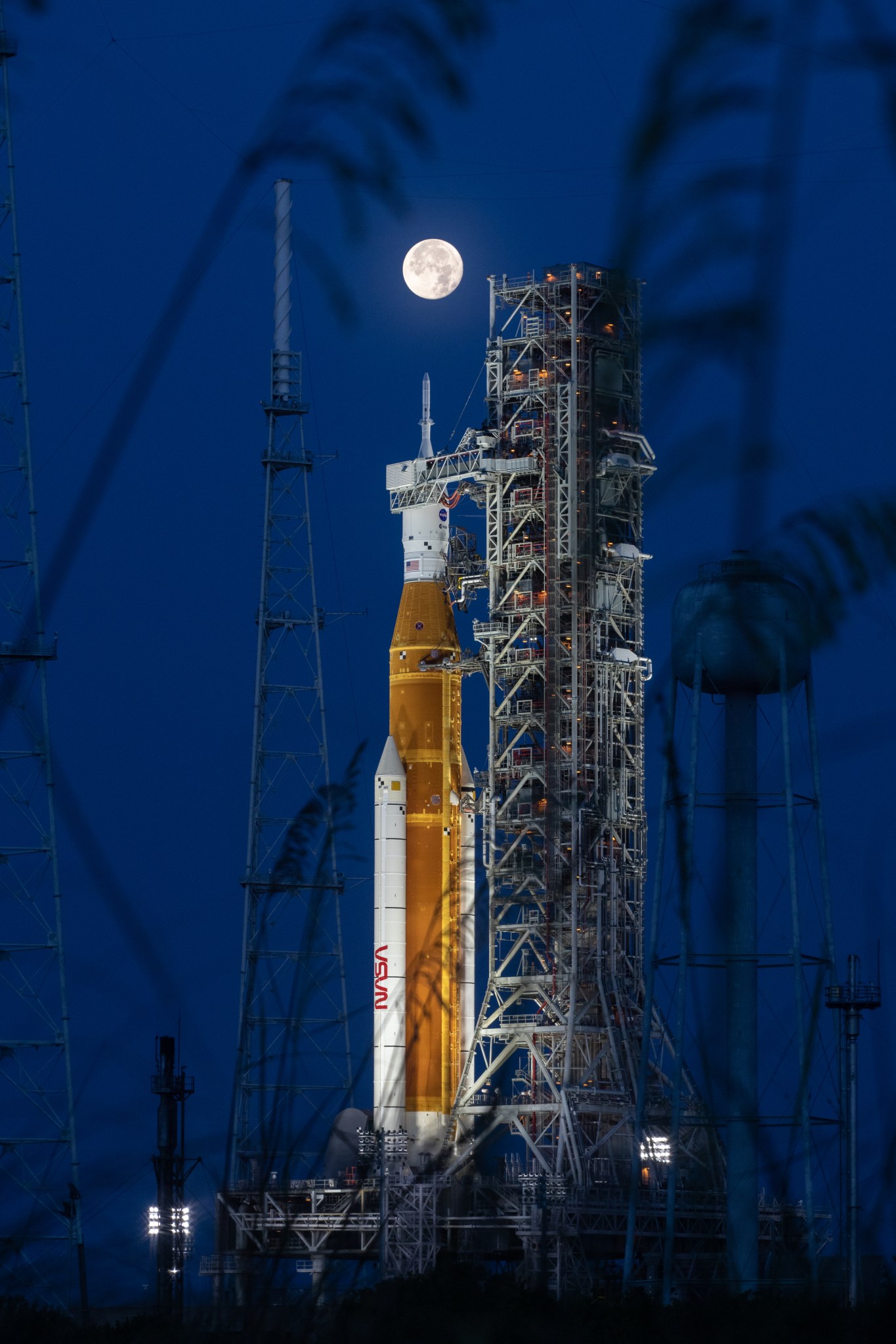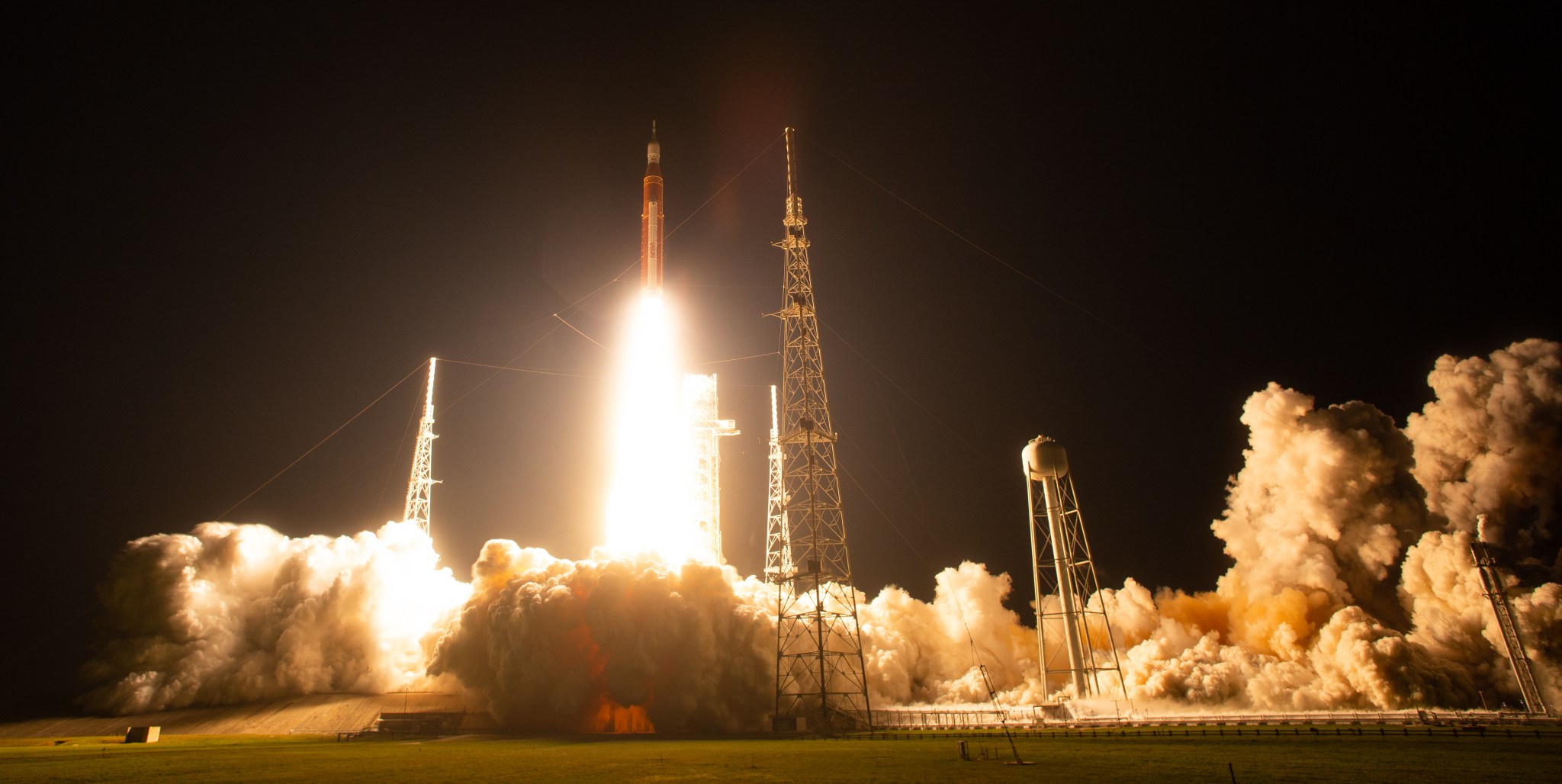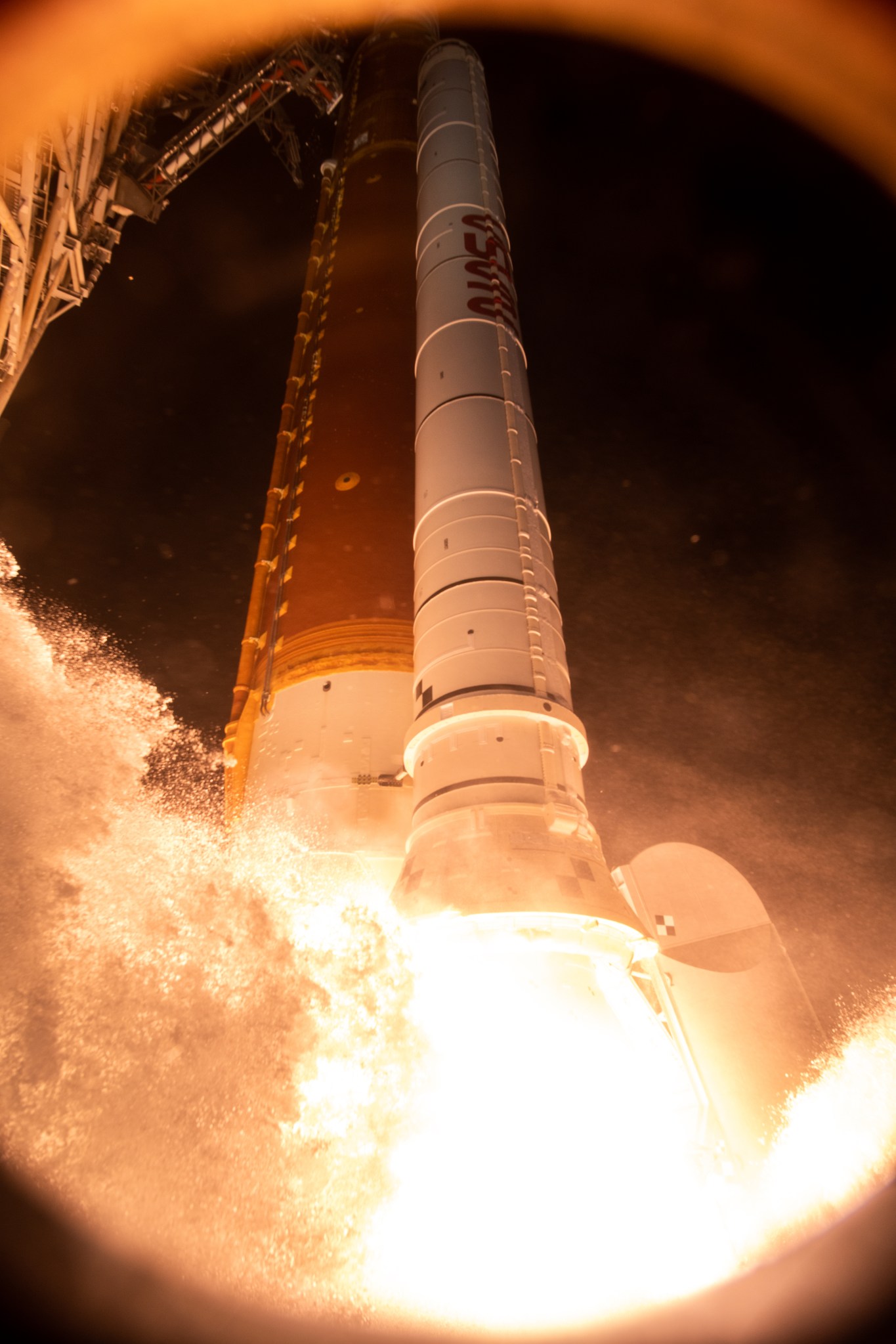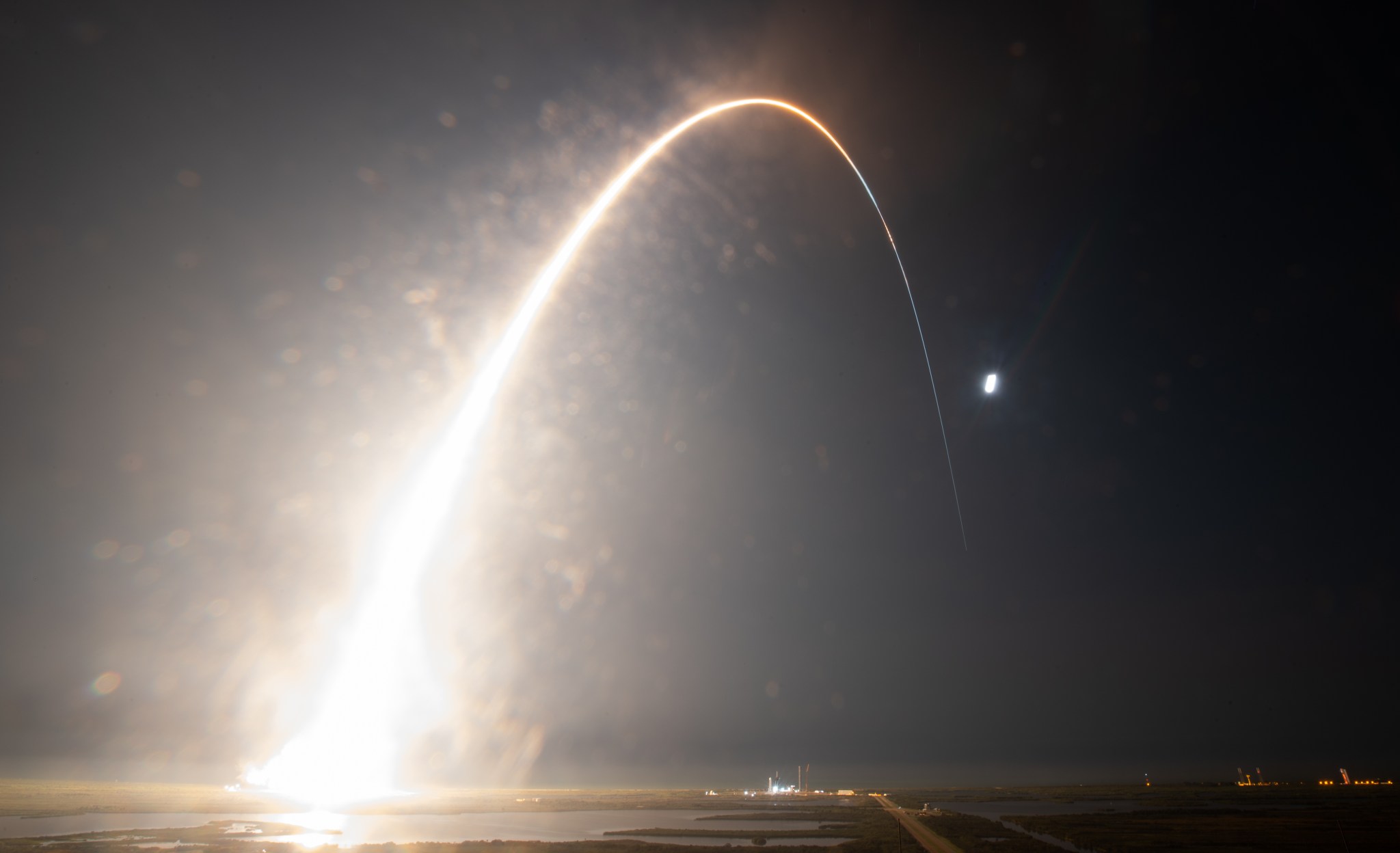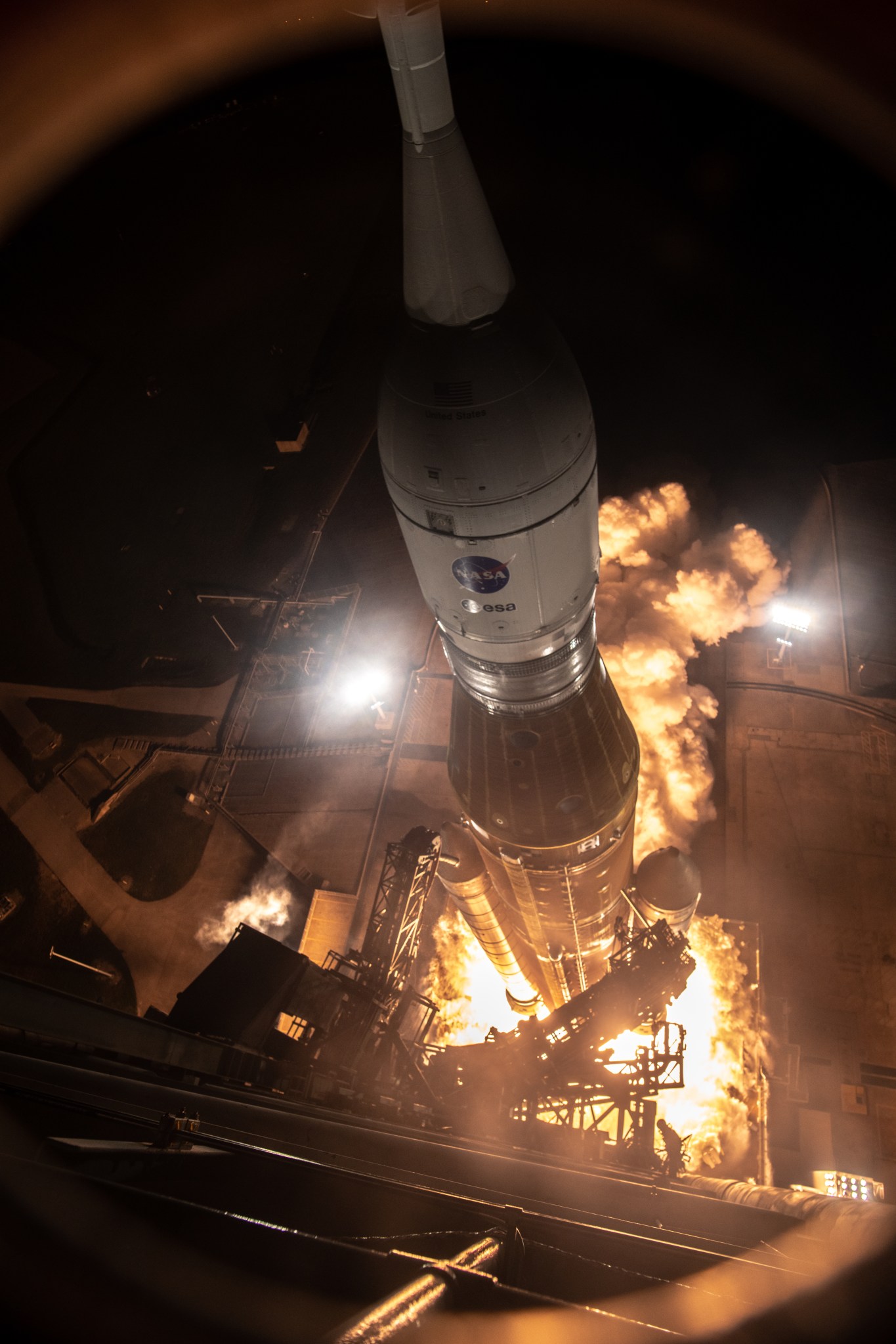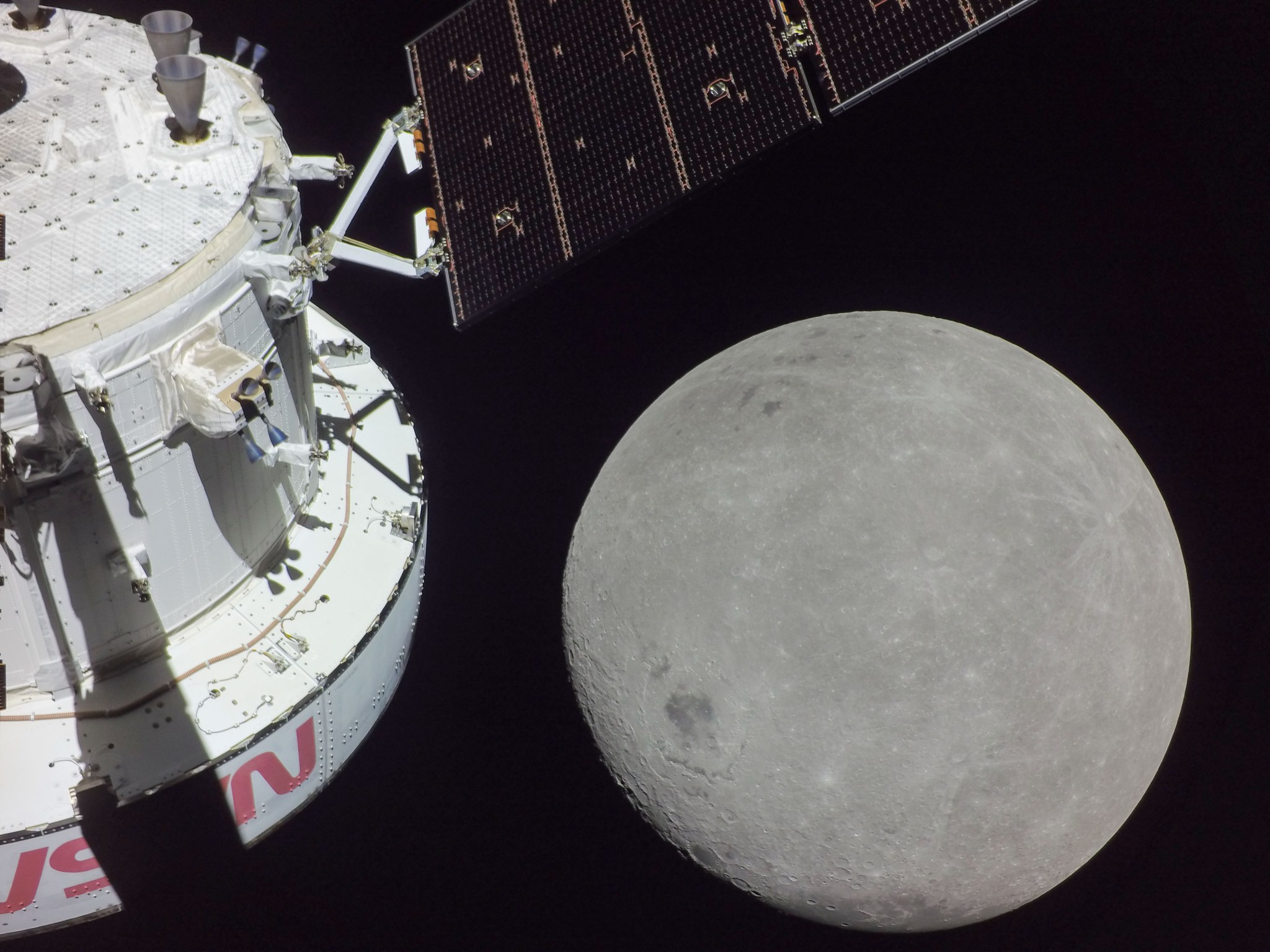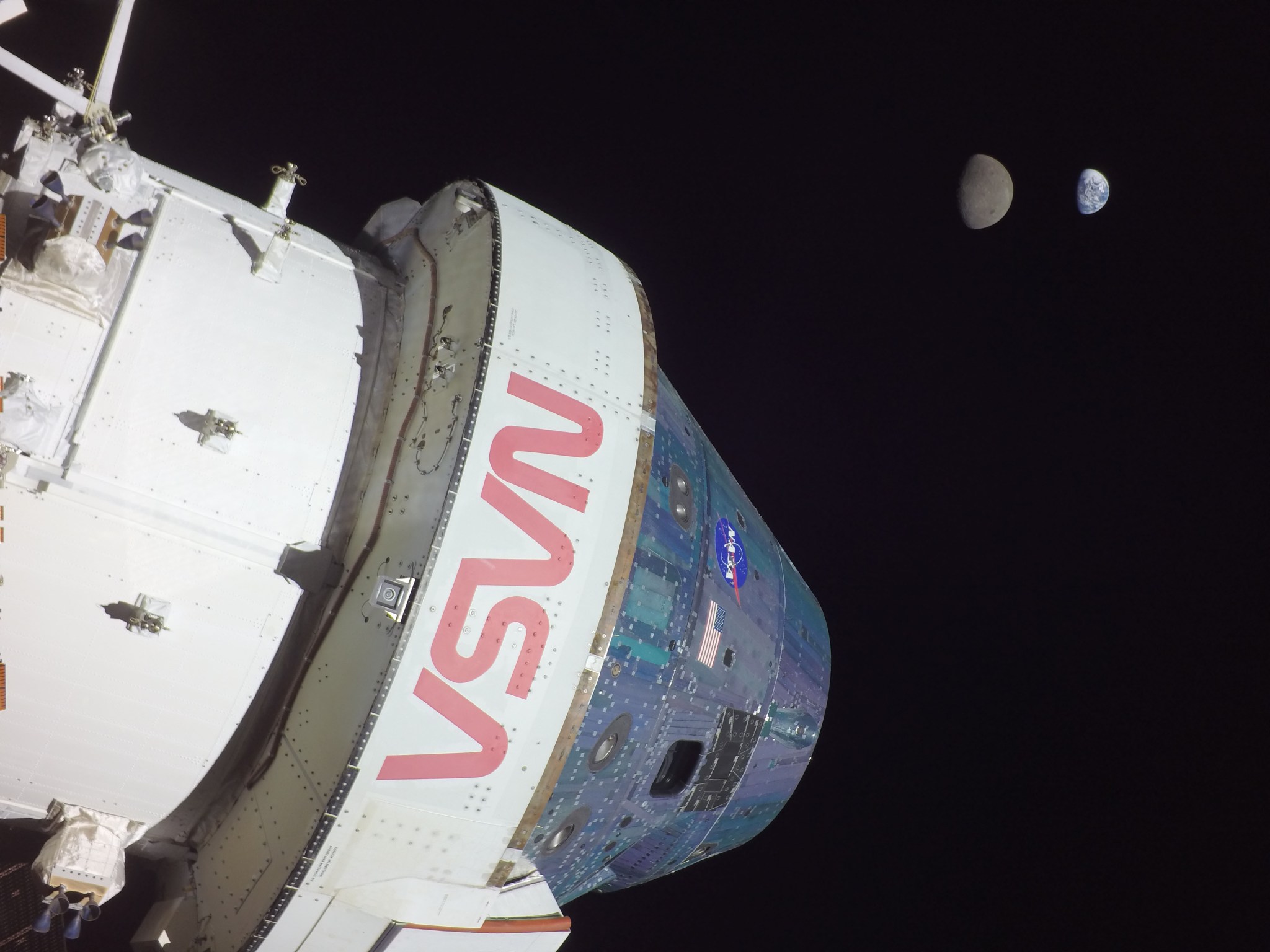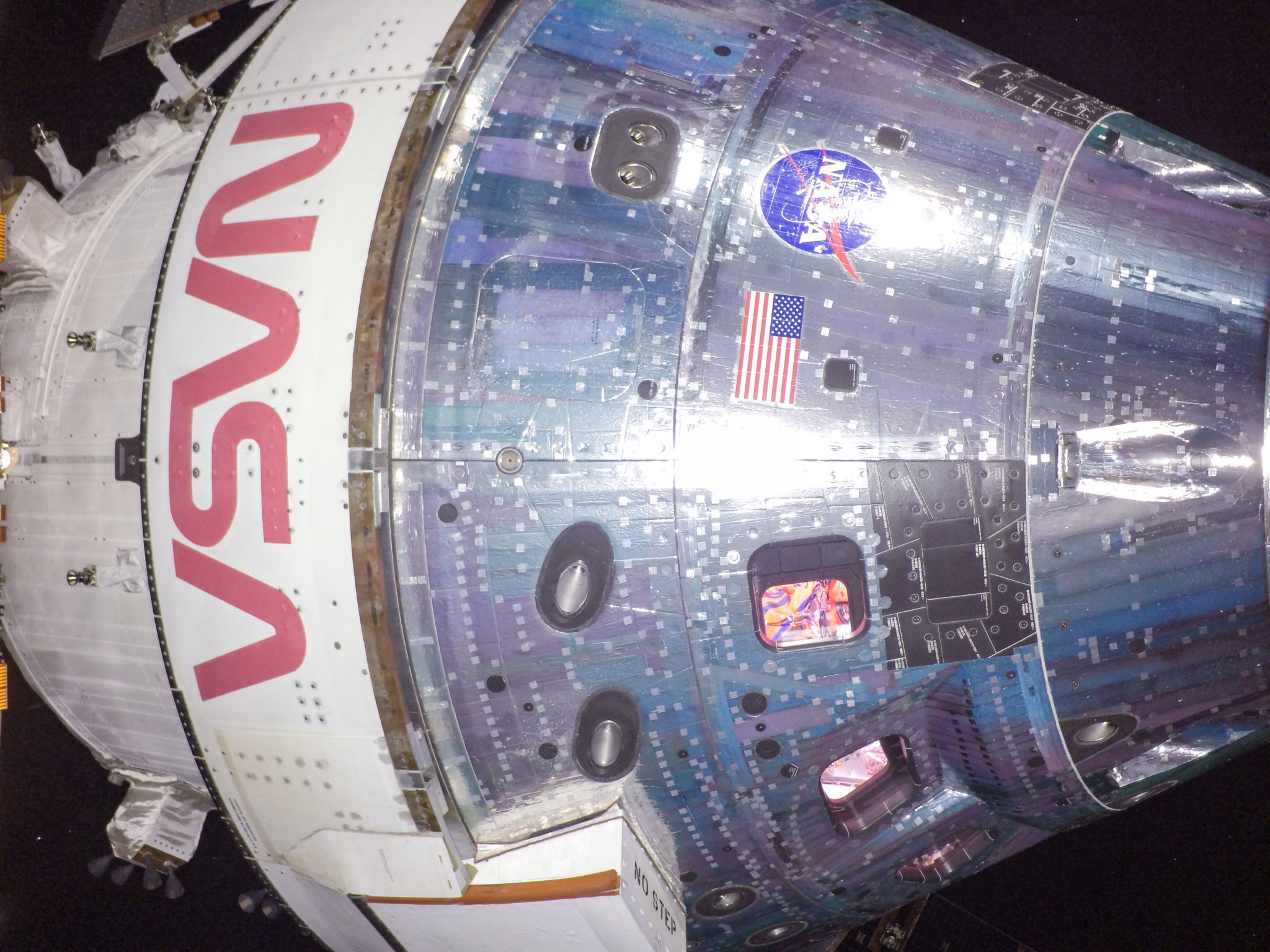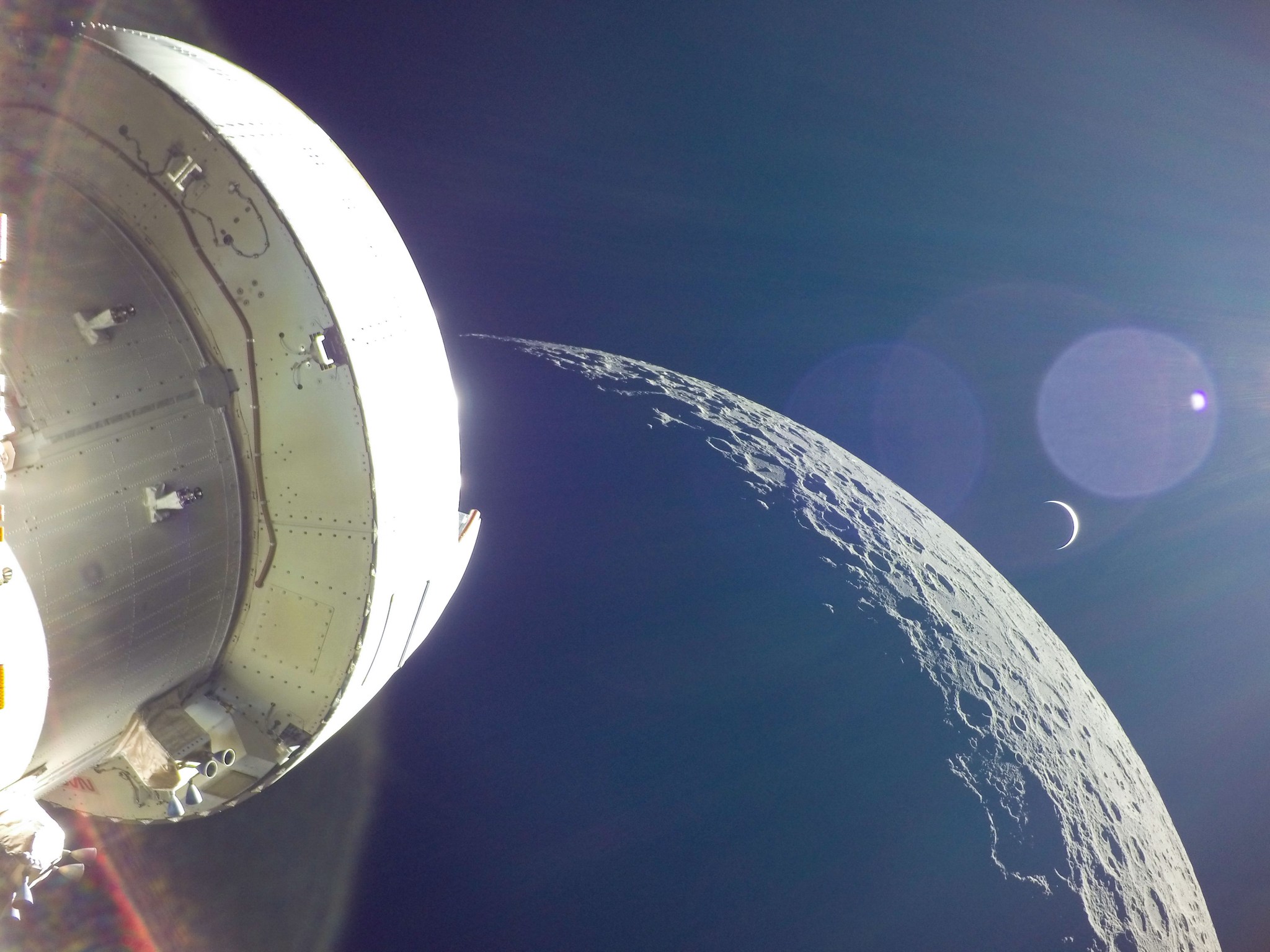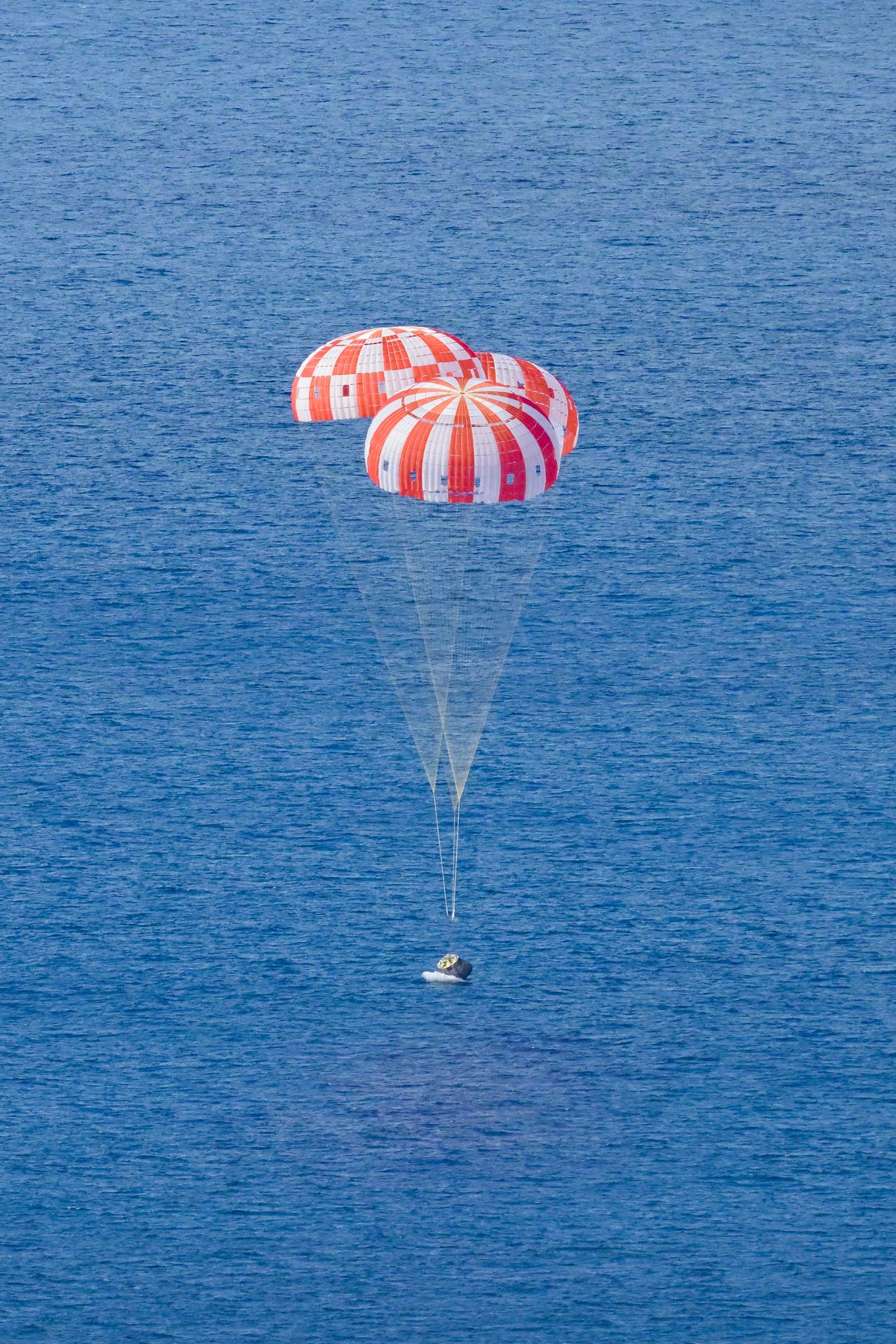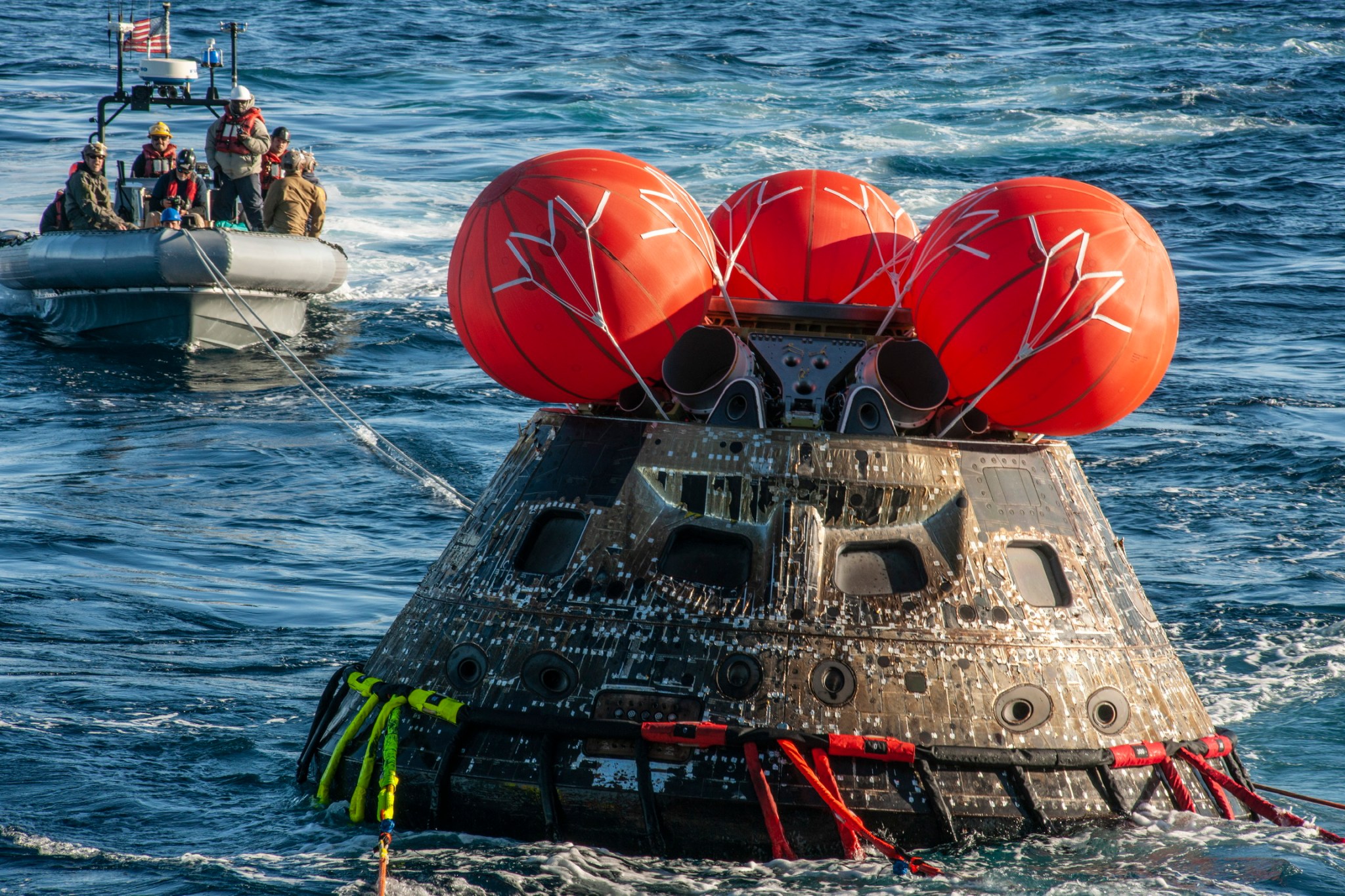During Artemis I, NASA’s new mega Moon rocket, the Space Launch System (SLS), roared into the night sky and sent the Orion spacecraft on a 1.4-million-mile journey beyond the Moon and back. The uncrewed flight test was the first in a series of increasingly complex missions that will set the stage for astronauts to step foot on the lunar surface, and for a long-term presence at the Moon that will enable future crewed missions to Mars.
From before its launch on Nov. 16, 2022 to splashdown on Dec. 11, NASA photographers and even the cameras onboard Orion captured stunning images, helping bring the public along for the mission.
A full Moon was in view from Launch Complex 39B at NASA’s Kennedy Space Center in Florida on June 14, as the Space Launch System rocket and Orion spacecraft, atop the mobile launcher, were being prepared for a wet dress rehearsal to practice timelines and procedures prior to launch. NASA/Cory Huston.
SLS and Orion lifted off from Launch Complex 39B at Kennedy at 1:47 a.m. EST on Nov. 16, illuminating the night sky. An initial assessment showed the rocket performed with precision, meeting or exceeding all expectations during its debut launch. NASA/Joel Kowsky.
A bird’s eye view of launch shows one of the rocket’s solid rocket boosters shortly after ignition. NASA/Chris Coleman, Kevin Davis.
This five-minute exposure shows launch and ascent as the rocket and spacecraft soar beyond the horizon. NASA/Joel Kowsky.
A camera on the mobile launcher shows the rocket and spacecraft lifting off as umbilical arms swing away to provide a clean path for the rocket’s ascent. NASA/Chris Coleman, Kevin Davis.
Former space shuttle launch directors Mike Leinbach, at right, and Bob Sieck perform the traditional cutting of the tie for Artemis Launch Director Charlie Blackwell-Thompson inside the Launch Control Center at Kennedy. NASA/Kim Shiflett.
A portion of the far side of the Moon looms large just beyond Orion in this image taken on the sixth day of the Artemis I mission by a camera on the tip of one of Orion’s solar array wings. The spacecraft entered the lunar sphere of influence Nov. 20, making the Moon instead of Earth the main gravitational force acting on the spacecraft. A day later, it came within 80 miles of the lunar surface before moving into a distant retrograde orbit around the Moon. The darkest spot visible near the middle of the image is Mare Orientale.
Flight controllers in mission control at NASA’s Johnson Space Center in Houston observe the Orion spacecraft under the direction of Flight Director Paul Konyha. The mission was supported by thousands of people around the world, from contractors who built the spacecraft and rocket, and the ground infrastructure needed to launch them, to flight controllers operating the spacecraft, to international and university partners, to small businesses supplying subsystems and components. NASA/Robert Markowitz.
The spacecraft reached a maximum distance from Earth when it was 268,563 miles away from our home planet. Orion surpassed the record for distance traveled by a spacecraft designed to carry humans, previously set during Apollo 13.
A camera mounted on one of Orion’s solar array wings captured a close up image of the crew module. While the flight was uncrewed to allow engineers to stress Orion’s systems before missions with astronauts, several “purposeful passengers” were aboard, including Commander Moonikin Campos, a manikin wearing an orange Orion Crew Survival System spacesuit and equipped with sensors measuring radiation, acceleration, vibration data throughout the mission.
A portion of the Moon looms large just beyond the Orion spacecraft in this image taken on Dec. 5, the 20th day of the flight test. The return powered flyby burn committed Orion to a return to Earth ahead of a splashdown in the Pacific Ocean. At its closest point, Orion flew within 80 miles of the lunar surface.
Orion captured the Earth rising behind the Moon following its second close flyby above the lunar surface as the spacecraft trekked toward home.
At 12:40 p.m. EST, Dec. 11, Orion splashed down in the Pacific Ocean west of Baja California, completing its 25.5 day mission beyond the Moon. During re-entry, Orion endured temperatures about half as hot as the surface of the Sun at about 5,000 degrees Fahrenheit. Within about 20 minutes, Orion slowed from nearly 25,000 mph to about 20 mph for its parachute-assisted splashdown. NASA/Josh Valcarcel
Orion was recovered by personnel on the USS Portland from the U.S. Department of Defense, including Navy amphibious specialists, Space Force weather specialists, and Air Force specialists, as well as engineers and technicians from NASA Kennedy, the agency’s Johnson Space Center in Houston, and Lockheed Martin Space Operations. Personnel from NASA’s Exploration Ground Systems led the recovery efforts. NASA/Kim Shiflett.




























